Tuesday 21 November, 2017, 10:27 - Broadcasting, Licensed, Spectrum Management
Posted by Administrator
Posted by Administrator
 Digital UK, the organisation responsible for promoting digital terrestrial television in the UK, has recently published a white paper it commissioned from consultants Aetha and Webb Search entitled 'The defragmentation dividend: A more efficient use of the UHF band'. The paper hypothesises that by re-organising the UHF (e.g. sub 1 GHz) spectrum available to mobile operators, it would be possible to use it more efficiently and deliver more service from the same amount of spectrum.
Digital UK, the organisation responsible for promoting digital terrestrial television in the UK, has recently published a white paper it commissioned from consultants Aetha and Webb Search entitled 'The defragmentation dividend: A more efficient use of the UHF band'. The paper hypothesises that by re-organising the UHF (e.g. sub 1 GHz) spectrum available to mobile operators, it would be possible to use it more efficiently and deliver more service from the same amount of spectrum.The paper identifies the fact that, at present, the 'digital dividend' spectrum (e.g. that which has been released from television broadcasting due to the increased efficiency of digital transmission over its old analogue counterpart), is broken up into a number of fragmented pieces whose usage is not optimum. This is certainly true: the figure below shows the current set of allocations within the frequency range 694 - 960 MHz.

The mobile allocations at present are as follows:
| Band | Uplink (MHz) | Downlink (MHz) | Amount (MHz) | Notes |
|---|---|---|---|---|
| 900 MHz | 876-915 | 921-960 | 78 | Including GSM-R |
| 800 MHz | 832-862 | 791-821 | 60 | |
| 700 MHz (a) | 703-733 | 758-788 | 60 | FDD |
| 700 MHz (b) | 738-753 | 15 | TDD or Downlink | |
| TOTAL | 213 | |||
In addition there is approximately 29 MHz set-aside for short-range devices. Thus, of the total of 266 MHz of spectrum between 694 and 960 MHz, 213 MHz (80%) is allocated to mobile services, 29 MHz (11%) for short-range devices leaving 24 MHz (9%) 'empty' (mostly for guard-bands to protect services on adjacent frequencies from interfering with each other). The theory is that by re-arranging the band, it is possible to use all of the small gaps that currently exist between the various mobile allocations (e.g. the 9% that is empty) for more mobile services.
One of the problems of the plans proposed in the report is that although they increase the amount of spectrum for mobile services to up to 250 MHz in their most extreme case, they also reduce the amount available for short-range devices from 29 MHz to just 16 MHz. Whilst you may be thinking, "isn't mobile a better use of spectrum than short-range devices", the fact is that an increasingly wide ecosystem of devices is supported in this spectrum. It includes radiomicrophones and wireless headphones but perhaps even more critically, a growing number of Internet of Things (IoT) technologies that are seen by many as being at the centre of the next stages in the development of the Internet. This includes sensors (e.g. thermostats, light sensors), smart meters (electricity, gas and water) and a wide range of smart-city applications such as transport management. Digital UK's proposed plans involve changing the frequencies used by these devices, which is notoriously difficult. How long, for example, do the keyfobs that unlock your car door last - as long as the vehicle itself in most cases. So clearing a short-range device frequency won't be completed until every device in a band has been replaced by a new one.
The report only pays passing comment to the new 600 MHz mobile band that is being implemented in the USA. In fact, the report seems to suggest that even its most conservative re-organisation option would release so much capacity that there would be no need for the 600 MHz band:
...even the more modest increase of 25% in Option 1 would be similar to the capacity that could be provided by repurposing the 600MHz band...
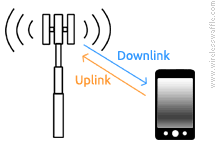 It makes this claim as a result of an oddity of current mobile technology, in which the amount of spectrum (and capacity) that is available to a mobile user is roughly equally split in the uplink and downlink directions (e.g. to the network from the user, and from the network to the user respectively). If the band was re-purposed as Time Division Duplex (TDD), the share of uplink and downlink capacity can be changed, and the report assumes that 80% of overall capacity would be made available for downlink and 20% for uplink (this is in fact in line with current estimates of the real split of usage). If this is the crux of the argument, then doing nothing at all to actually change the overall amount of mobile capacity available, but changing all of the existing allocations to TDD would approximately yield a 60% 'improvement' in downlink capacity, but this would be to the loss of uplink capacity which would fall by 250%! There is no gain without pain. In addition, TDD operators in adjacent mobile spectrum need to fully synchronise their networks otherwise there needs to be a guard-band between them, reducing the overall efficiency of use and opening up new gaps.
It makes this claim as a result of an oddity of current mobile technology, in which the amount of spectrum (and capacity) that is available to a mobile user is roughly equally split in the uplink and downlink directions (e.g. to the network from the user, and from the network to the user respectively). If the band was re-purposed as Time Division Duplex (TDD), the share of uplink and downlink capacity can be changed, and the report assumes that 80% of overall capacity would be made available for downlink and 20% for uplink (this is in fact in line with current estimates of the real split of usage). If this is the crux of the argument, then doing nothing at all to actually change the overall amount of mobile capacity available, but changing all of the existing allocations to TDD would approximately yield a 60% 'improvement' in downlink capacity, but this would be to the loss of uplink capacity which would fall by 250%! There is no gain without pain. In addition, TDD operators in adjacent mobile spectrum need to fully synchronise their networks otherwise there needs to be a guard-band between them, reducing the overall efficiency of use and opening up new gaps.Whilst the report makes a valid argument about whether the future of mobile should be TDD or FDD, it is perhaps no surprise that it chooses this solution to theorise about an improvement in the efficiency of use of UHF spectrum, over and above the use of the new 600 MHz band, whose use would obviously entail the loss of (yet) more spectrum for digital terrestrial television. Sadly for Digital UK, the required pain, in terms of re-organising existing mobile networks, and replacing all short-range devices is sadly never going to counterbalance the gain of a few extra MHz of UHF spectrum.
add comment
( 476 views )
| permalink
| 



 ( 3 / 28200 )
( 3 / 28200 )




 ( 3 / 28200 )
( 3 / 28200 )
Wireless Waffle recently spotted that boat trips to see Radio Caroline's ship, the Ross Revenge, were available to book from their web-site (follow the link) and so it seemed like the perfect opportunity to don an anorak and set sail. On the day of the visit, the weather was beautiful, sunny, 26C and the sea was calm, but it isn't always like that. Boarding the Razorbill 3 , the tender which takes you from the jetty at West Mersea out to the Ross Revenge, it was a pleasure to see so many families taking advantage of the weather to go crabbing. The ride out took about 25 minutes and was a delight in itself with the cool sea air rushing past.
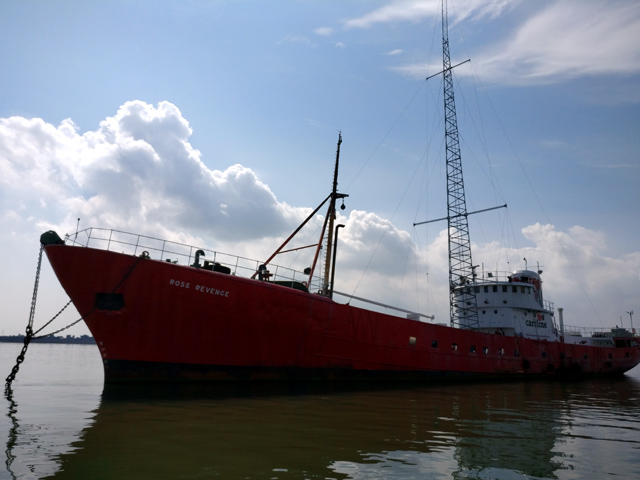 Pulling alongside the boat, it looked exactly as it does in all the postcards, though the current mast is a lot smaller than the 100 metre mast that was in use for transmission during Radio Caroline's heyday. Arrival onto the boat was greeted by a cup of tea and a fig roll in the mess and a description of the history of the boat, which turns out to have been a prize Grimsby-based fishing boat originally made as an Icelandic ice-breaker. Much of the tour of the boat is about the Ross Revenge itself, as well as the catastrophic events of October 1987 which saw the original mast collapse in a storm.
Pulling alongside the boat, it looked exactly as it does in all the postcards, though the current mast is a lot smaller than the 100 metre mast that was in use for transmission during Radio Caroline's heyday. Arrival onto the boat was greeted by a cup of tea and a fig roll in the mess and a description of the history of the boat, which turns out to have been a prize Grimsby-based fishing boat originally made as an Icelandic ice-breaker. Much of the tour of the boat is about the Ross Revenge itself, as well as the catastrophic events of October 1987 which saw the original mast collapse in a storm.
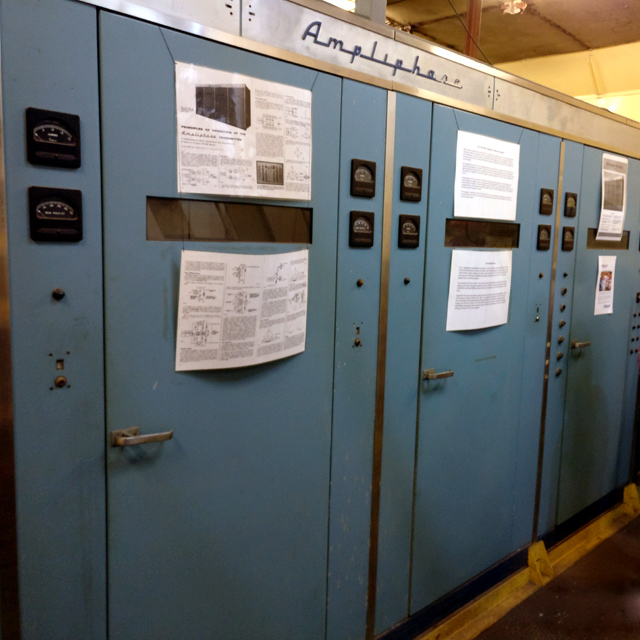 Of course no tour of such an historic ship would be complete without a visit to the studios and the technical facilities such as the engine room, generator room and of course the transmitter room. The 50 kW 'Ampliphase' transmitter consumed nearly 1 tonne of fuel per day to operate so it's no wonder that getting supplies to the boat, including diesel and fresh water, were so critical.
Of course no tour of such an historic ship would be complete without a visit to the studios and the technical facilities such as the engine room, generator room and of course the transmitter room. The 50 kW 'Ampliphase' transmitter consumed nearly 1 tonne of fuel per day to operate so it's no wonder that getting supplies to the boat, including diesel and fresh water, were so critical.
Though the notion of being a pirate at sea may seem romantic, it is clear that the lives of the DJs and other staff must, at times, have been pretty miserable. The cabins below the deck are relatively spartan and if it was blowing a gale, there couldn't have been much to do if you weren't on air.
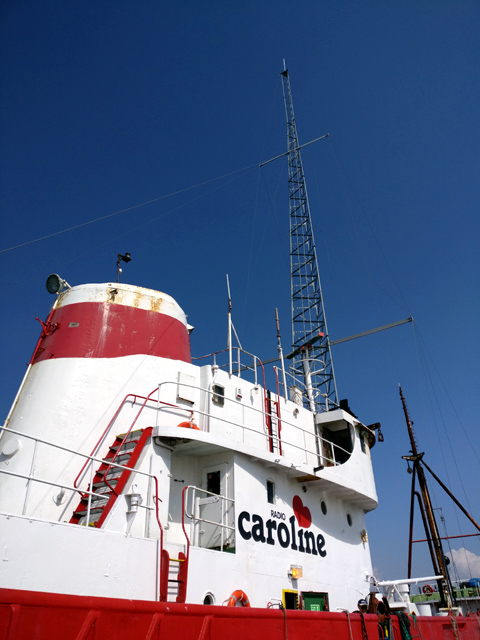 The return from the ship to the shore was equally exhilarating and you left with a lot of respect for those who took to the seas to try and deliver a radio service that filled the gap left by the legal, land-based services.
The return from the ship to the shore was equally exhilarating and you left with a lot of respect for those who took to the seas to try and deliver a radio service that filled the gap left by the legal, land-based services.
The tour comes with the Wireless Waffle 'big thumbs up' seal of approval, and is highly recommended. Obviously the weather can not be guaranteed, but an interesting and enlightening day-out is assured.
Recently, Radio Caroline has been awarded a licence by Ofcom to operate a 1 kW medium wave service on the old BBC World Service channel of 648 kHz. Whether the station can hold its own in today's crowded, on-line, market remains to be seen, but there will no doubt be a few anoraks tuning in for old time's sake. And maybe they can re-capture the spirit of those halcyon days without needing sea sick buckets.
 Pulling alongside the boat, it looked exactly as it does in all the postcards, though the current mast is a lot smaller than the 100 metre mast that was in use for transmission during Radio Caroline's heyday. Arrival onto the boat was greeted by a cup of tea and a fig roll in the mess and a description of the history of the boat, which turns out to have been a prize Grimsby-based fishing boat originally made as an Icelandic ice-breaker. Much of the tour of the boat is about the Ross Revenge itself, as well as the catastrophic events of October 1987 which saw the original mast collapse in a storm.
Pulling alongside the boat, it looked exactly as it does in all the postcards, though the current mast is a lot smaller than the 100 metre mast that was in use for transmission during Radio Caroline's heyday. Arrival onto the boat was greeted by a cup of tea and a fig roll in the mess and a description of the history of the boat, which turns out to have been a prize Grimsby-based fishing boat originally made as an Icelandic ice-breaker. Much of the tour of the boat is about the Ross Revenge itself, as well as the catastrophic events of October 1987 which saw the original mast collapse in a storm.  Of course no tour of such an historic ship would be complete without a visit to the studios and the technical facilities such as the engine room, generator room and of course the transmitter room. The 50 kW 'Ampliphase' transmitter consumed nearly 1 tonne of fuel per day to operate so it's no wonder that getting supplies to the boat, including diesel and fresh water, were so critical.
Of course no tour of such an historic ship would be complete without a visit to the studios and the technical facilities such as the engine room, generator room and of course the transmitter room. The 50 kW 'Ampliphase' transmitter consumed nearly 1 tonne of fuel per day to operate so it's no wonder that getting supplies to the boat, including diesel and fresh water, were so critical.Though the notion of being a pirate at sea may seem romantic, it is clear that the lives of the DJs and other staff must, at times, have been pretty miserable. The cabins below the deck are relatively spartan and if it was blowing a gale, there couldn't have been much to do if you weren't on air.
 The return from the ship to the shore was equally exhilarating and you left with a lot of respect for those who took to the seas to try and deliver a radio service that filled the gap left by the legal, land-based services.
The return from the ship to the shore was equally exhilarating and you left with a lot of respect for those who took to the seas to try and deliver a radio service that filled the gap left by the legal, land-based services.The tour comes with the Wireless Waffle 'big thumbs up' seal of approval, and is highly recommended. Obviously the weather can not be guaranteed, but an interesting and enlightening day-out is assured.
Recently, Radio Caroline has been awarded a licence by Ofcom to operate a 1 kW medium wave service on the old BBC World Service channel of 648 kHz. Whether the station can hold its own in today's crowded, on-line, market remains to be seen, but there will no doubt be a few anoraks tuning in for old time's sake. And maybe they can re-capture the spirit of those halcyon days without needing sea sick buckets.
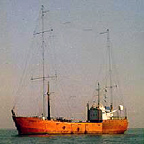 As a child, the medium wave band was a mysterious place replete with strong international broadcasters such as Radio Sweden International, Radio Moscow and the BBC, and who could forget the thrill of tuning into the medium wave pirates of the past, whether it was Radio Caroline in the 1960s, the land based pirates such as Radio Jackie in the 1970s, or Laser 558 in the 1980s. Being something of a radio back-water these days, the medium wave band is not something that Wireless Waffle has paid much attention to. So on a recent night-time road-trip where there was little else to do, the journey was shortened by the unforgiving task of working the way along the medium wave dial to see what was there these days.
As a child, the medium wave band was a mysterious place replete with strong international broadcasters such as Radio Sweden International, Radio Moscow and the BBC, and who could forget the thrill of tuning into the medium wave pirates of the past, whether it was Radio Caroline in the 1960s, the land based pirates such as Radio Jackie in the 1970s, or Laser 558 in the 1980s. Being something of a radio back-water these days, the medium wave band is not something that Wireless Waffle has paid much attention to. So on a recent night-time road-trip where there was little else to do, the journey was shortened by the unforgiving task of working the way along the medium wave dial to see what was there these days.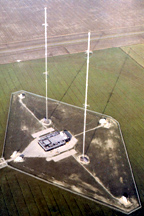 It is evident that the UK still has a prestigious number of medium wave stations, though many are geared towards older listeners (whose hearing is no doubt so frequency constrained that the limited bandwidth of AM sounds just as clear as FM) and whose service area is relatively limited due to the lower powers used (most UK local AM stations have transmitter powers around 500 Watts). At night, however, is when the band comes alive and stations from all over Europe (and even further afield) become audible. Tuning around at night reveals one key fact: Spain appears to be the king of the medium wave band. On almost any clear frequency, it is the Spanish radio stations that seem to dominate. Germany has now ceased medium wave broadcasting, and there are a diminishing number of stations in France and the Netherlands (even stalwart Radio 538 on 891 kHz recently closed down just a couple of weeks ago on 26 October).
It is evident that the UK still has a prestigious number of medium wave stations, though many are geared towards older listeners (whose hearing is no doubt so frequency constrained that the limited bandwidth of AM sounds just as clear as FM) and whose service area is relatively limited due to the lower powers used (most UK local AM stations have transmitter powers around 500 Watts). At night, however, is when the band comes alive and stations from all over Europe (and even further afield) become audible. Tuning around at night reveals one key fact: Spain appears to be the king of the medium wave band. On almost any clear frequency, it is the Spanish radio stations that seem to dominate. Germany has now ceased medium wave broadcasting, and there are a diminishing number of stations in France and the Netherlands (even stalwart Radio 538 on 891 kHz recently closed down just a couple of weeks ago on 26 October). Of course, when driving it's difficult to simultaneously look up what stations are on a particular frequency (unless you have a willing passenger) so any interesting stations and frequencies have to be committed to memory for later research. One such station and frequency that sprang up was I Am Radio on 1350 kHz. At the time of listening, it was playing almost non-stop obscure disco tracks with occasional announcements and news (from NPR) in English and the odd announcement in Italian. It is the Italian language announcements that give a clue as to the station's provenance, and a bit of web-searching later revealed that the station is 'semi-pirate'. Exactly what this means is not clear but it seems to suggest that it is not a totally legitimate organisation.
 The signal on 1350 kHz is surprisingly strong, given the stated night-time transmitter power of just 1 kW (though there are rumours of an increase to 50 kW being due). And as the frequency is almost completely clear of interference from any high power transmitters in Europe (if you exclude the 850 kW mammoth or TWR Asia in Armenia), reception is surprisingly good. If obscure disco and news from the USA is your thing, why not give it a try. They claim a contact address of 'info@iamradio.am' though the associated web-address only yields a parking page.
The signal on 1350 kHz is surprisingly strong, given the stated night-time transmitter power of just 1 kW (though there are rumours of an increase to 50 kW being due). And as the frequency is almost completely clear of interference from any high power transmitters in Europe (if you exclude the 850 kW mammoth or TWR Asia in Armenia), reception is surprisingly good. If obscure disco and news from the USA is your thing, why not give it a try. They claim a contact address of 'info@iamradio.am' though the associated web-address only yields a parking page.But coming back to the question of which European country rules the medium wave band, Wireless Waffle has conducted an analysis of the stations currently on air to find out which country uses the most frequencies and which country emits the most power into the ether, based on data from MW List.
The answers are maybe not that surprising. The top 10 European medium wave countries in terms of the numbers of frequencies used (out of the 120 possible channels from 531 to 1602 kHz inclusive) are as follows:
| Position | Country | Frequencies Used |
|---|---|---|
| 1 | Spain | 69 |
| 2 | United Kingdom | 68 |
| 3 | Romania | 26 |
| 4 | Italy | 21 |
| 5 | The Netherlands | 10 |
| 6 | Greece | 9 |
| 7= | Portugal | 8 |
| 7= | Czech Republic | 8 |
| 9 | Poland | 7 |
| 10= | Cyprus | 6 |
| 10= | Hungary | 6 |
So Spain really are medium wave royalty, if the number of frequencies in use is the measure. But what about if the total amount of power radiated into the ether is taken into account. The results look as follows:
| Position | Country | Power Emitted (kW) |
|---|---|---|
| 1 | Spain | 5190 |
| 2 | United Kingdom | 4130 |
| 3 | Romania | 3905 |
| 4 | Hungary | 2510 |
| 5 | Cyprus | 1910 |
| 6 | Czech Republic | 1150 |
| 7 | France | 1010 |
| 8 | Macedonia | 400 |
| 9 | Italy | 390 |
| 10 | Belgium | 310 |
 Spain retains its crown as the top medium wave transmitting country in Europe with over 5 MegaWatts of radiated power, but some surprising new countries appear lower down the top 10. Hungary jumps from joint 10th to 4th. France has only 3 medium wave frequencies in use but as one of these is the behemoth 1000 kW transmitter of TWR Europe on 1467 kHz this dwarfs many of the other countries who have a greater number of transmitters but of much lower power. Belgium has only 2 active medium wave frequencies but at 300 kW, RTBF International on 621 kHz tips the scales in their favour to bring them in at (this week's) number 10.
Spain retains its crown as the top medium wave transmitting country in Europe with over 5 MegaWatts of radiated power, but some surprising new countries appear lower down the top 10. Hungary jumps from joint 10th to 4th. France has only 3 medium wave frequencies in use but as one of these is the behemoth 1000 kW transmitter of TWR Europe on 1467 kHz this dwarfs many of the other countries who have a greater number of transmitters but of much lower power. Belgium has only 2 active medium wave frequencies but at 300 kW, RTBF International on 621 kHz tips the scales in their favour to bring them in at (this week's) number 10. 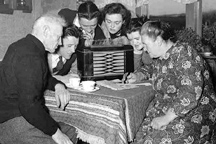 What does this tell us? Nothing in particular, and definitely nothing of any use or value, it's just a somewhat pointless academic exercise. But it does suggest that if you are a manufacturer of AM transmitters, you should undoubtedly aim to site your offices in London, Madrid and Bucharest. Or that if you are learning Spanish, you might do well to buy a medium wave radio and tune around the band at night!
What does this tell us? Nothing in particular, and definitely nothing of any use or value, it's just a somewhat pointless academic exercise. But it does suggest that if you are a manufacturer of AM transmitters, you should undoubtedly aim to site your offices in London, Madrid and Bucharest. Or that if you are learning Spanish, you might do well to buy a medium wave radio and tune around the band at night!
Information on broadcast radio stations that are actually on-air in various cities around the world is sometimes easy to get hold of, and sometimes very difficult. For many African countries, the situation is quite dynamic as stations come and go, and also many stations have no web presence (whether web-site or streaming) making verifying things very complex.
As occasional readers may be aware, the Wireless Waffle team travel to some pretty out-of-the-way places in pursuit of digging out the most important factlets regarding all matters related to radio spectrum. And with that in mind, we bring you a bandscan of the FM band in Lomé, the capital city of Togo in West Africa.
For a country where the average annual income is just US$650, there sure are a lot of radio stations on the air!
As occasional readers may be aware, the Wireless Waffle team travel to some pretty out-of-the-way places in pursuit of digging out the most important factlets regarding all matters related to radio spectrum. And with that in mind, we bring you a bandscan of the FM band in Lomé, the capital city of Togo in West Africa.
| Frequency | Station | Notes | |
|---|---|---|---|
| 89.9 | City FM | Stereo | 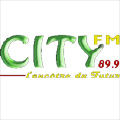 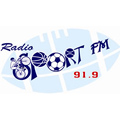 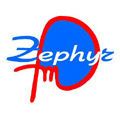  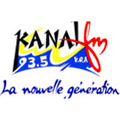 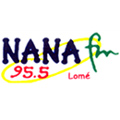 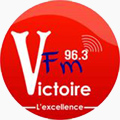  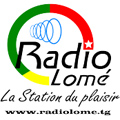 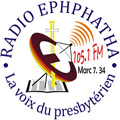 |
| 91.5 | RFI 1 Afrique | Stereo. RDS: Radio France Internat | |
| 91.9 | Sport FM | Stereo | |
| 92.3 | Zephyr | Stereo | |
| 93.1 | Taxi FM | Stereo | |
| 93.5 | Kanal FM | Stereo | |
| 94.3 | Radio Zion | Stereo | |
| 95.5 | Nana FM | Stereo. RDS: Test 123 | |
| 96.1 | Victory FM | Aflao, Ghana | |
| 96.3 | Victoire FM | Stereo | |
| 97.1 | Radio Metropolys Lome | ||
| 97.5 | BBC World Service | Stereo | |
| 97.9 | Radio Maria Togo | ||
| 98.7 | Bonne Nouvelle | ||
| 99.5 | Radio Lome | Stereo | |
| 100.7 | Radio De L'Evangile | Stereo | |
| 101.1 | Radio Horizon | ||
| 101.5 | Radio Kara | Stereo | |
| 102.7 | KNTB | ||
| 103.1 | Radio Carre Jaune | ||
| 103.9 | Frequence 1 | ||
| 105.1 | Radio Ephphata La Voix Du Presbyterien | RDS: RADIO | EPHPHATA | LA VOIX | DU | PRESBYTE | RIEN | |
| 105.5 | Sinai | Stereo. RDS: FM 105.5 | |
| 106.3 | Providence | ||
| Correct as of 30 June, 2016 | |||

